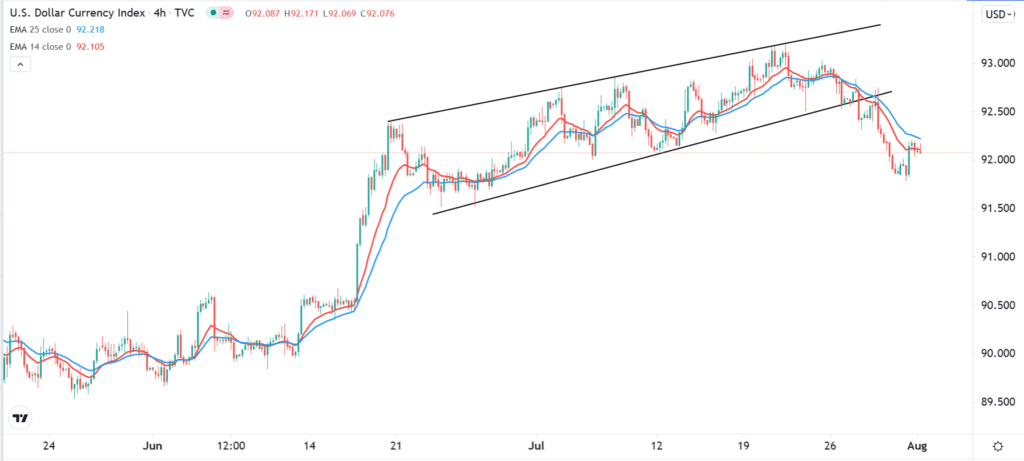
The US dollar index (DXY) was little changed during the Asian session ahead of a relatively busy week for the greenback. The index was trading at $9210 on Monday morning.
US jobs data ahead
The most significant catalyst for the US dollar index will be the latest American jobs data that will come out on Friday. Before that, America Data Processor (ADP) will publish the private-sector payroll estimate on Wednesday. Economists expect the data to show that private employers added more than 700k jobs in July as the economic rebound continued. In the past, the ADP figure has deviated substantially from the official jobs data.
On Friday, the Bureau of Labor Statistics (BLS) will publish the latest non-farm payrolls data. The median estimate among analysts polled by Reuters is that the economy added more than 900k jobs in July after it added 850k in the previous month. This addition is expected to pull the overall unemployment rate from 5.9% in June to 5.7% in July. At the same time, wages are expected to keep rising as companies battle for talent.
Strong US non-farm payrolls will be good for the US dollar index. That’s because they will be a catalyst for the Federal Reserve to shift its monetary policy. Just last week, the Fed decided to leave interest rates unchanged between 0% and 0.25%. The bank also decided to continue with its quantitative easing policy unchanged.
Covid cases complicate recovery
Still, with the number of Covid cases rising in the US, there is a possibility that the American recovery will be disrupted. For one, the moving average of all Covid cases in the US has jumped to more than 66,000. This is a substantial figure considering that the vaccination rate has declined. In a statement during the weekend, Anthony Fauci warned that the situation would worsen in August.
Worse, the number of Covid cases among the vaccinated is also rising. Indeed, a report published on Friday showed that three-fourths of new infections in Massachusetts were among the vaccinated. Another worrying sign for the American economy is that its recovery in the second quarter was lower than expected. Data compiled by the Bureau of Economic Analysis showed that the economy expanded by 6.5%, which was lower than the median estimate of 8.5%.
Meanwhile, analysts expect that the US inflation will retreat in the coming months. According to the Wall Street Journal (WSJ), analysts expect that the labor shortage and supply-chain disruption will start easing in the coming month. The report cited the performance of the break-even rate for five-, seven-, and ten-year Treasuries. The three yields have declined, signaling that investors expect that inflationary pressures will ease. Further, the bond yields of the 10-year bonds have declined to the lowest level this year.
The US dollar index will react to the latest US manufacturing and services PMI data that will come out on Monday and Wednesday. Other important figures will be the initial jobless claims numbers, trade, and factory orders.
US dollar index analysis
Turning to the four-hour chart, we see that the DXY index formed an ascending wedge pattern in July. This pushed the index to a monthly high of $93.20. In price action, a rising wedge is usually a bearish signal. The index then broke out below the wedge last week. It then moved below the 25-day and 14-day exponential moving averages (EMA). Oscillators like MACD and the Relative Strength Index (RSI) have also retreated. Therefore, the pair will likely maintain the bearish trend as investors target the next key support at $90.5 this month.









Leave a Reply